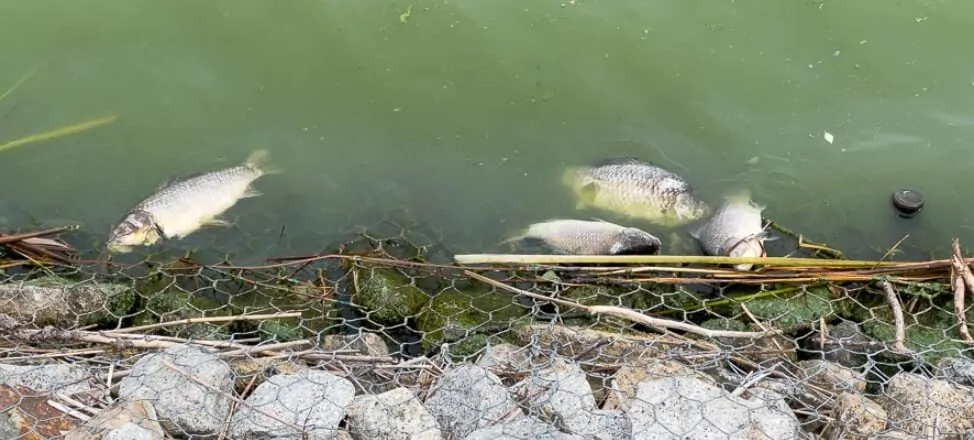News, Issue 16/2024
The cyprinid herpesvirus caused fish die-off in Lake Słupeckie
The mass fish die-off draws attention. Fish are relatively large organisms, making their bodies more noticeable than those of invertebrates. They also hold economic value, and many people engage in recreational fishing. Lastly, they are biologically similar to humans, so their mass death instinctively signals a potential threat to us.
Fish die-off – lack of oxygen as an important cause of extinction
Water quality control services encounter fish die-offs often enough to become routine. If the phenomenon is not accompanied by noticeable environmental contamination, the most likely cause is hypoxia, a local oxygen deficiency in the water. Hypoxia frequently occurs in winter in frozen water bodies when the ice layer cuts off the air supply from the atmosphere. This phenomenon, known in fishing literature as “winter kill,” has a summer equivalent called “summer kill,” where the lack of oxygen is due to its reduced solubility in warm water. It often occurs during the final phase of algae blooms when bacteria decomposing dead algae consume oxygen faster than fish.
Mass fish die-off in Lake Słupeckie
It was no surprise that hypoxia was considered the most likely cause of the summer mass fish die-off in Lake Słupeckie – a dam reservoir on the Meszna River in Słupca. In August this year, 30 tons of dead fish were removed from the lake. The Provincial Inspectorate for Environmental Protection conducted initial investigations on August 1. The site visit confirmed the fish kill but did not find any invertebrate die-off. During the investigation, no visible pollution was observed, nor was there any evidence of pollution inflows. However, water blooms caused by cyanobacteria were noticeable.
Algae harm not only Lake Słupeckie
Throughout the die-off period, the direct causes were unknown. Similar incidents occurred in other Polish water bodies around the same time. The largest die-off occurred in the Dzierżno Duże reservoir. However, in each case, similar outcomes might have different causes. In Lake Słupeckie, cyanobacteria seemed to be the main culprits, suspected of releasing toxins, though no evidence of this was found.
Challenging living conditions
Meszna River, where Lake Słupeckie was created, has poor ecological status. In 2021, below Słupca, the nitrogen and phosphorus levels exceeded ecological norms, and there were high levels of conductivity and poor oxygen conditions. The mercury levels in fish tissues also exceeded environmental norms. Despite these conditions, many fish species inhabit Lake Słupeckie.
Surprising conclusion to fish study
This year, however, it was the silver crucian carp that suffered the most. The results of veterinary research conducted by the National Veterinary Institute – PIB in Puławy solved the mystery. The bodies of the dead fish contained the Cyprinid herpesvirus (Cyvirus cyprinidallo 2), which mainly infects crucian carp. The disease it causes is known as herpesvirus hematopoietic necrosis in ornamental crucian carp (HVHN). However, it can also affect other species, as it likely did this summer in Lake Słupeckie.
main photo: twojaslupca.pl









